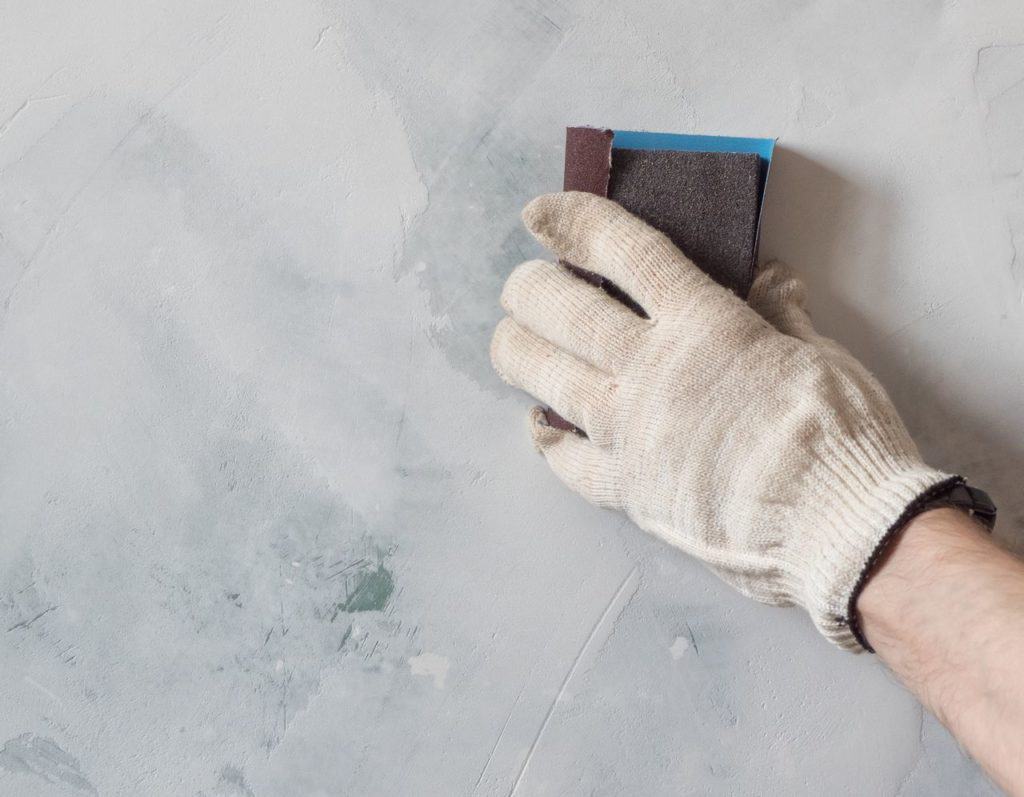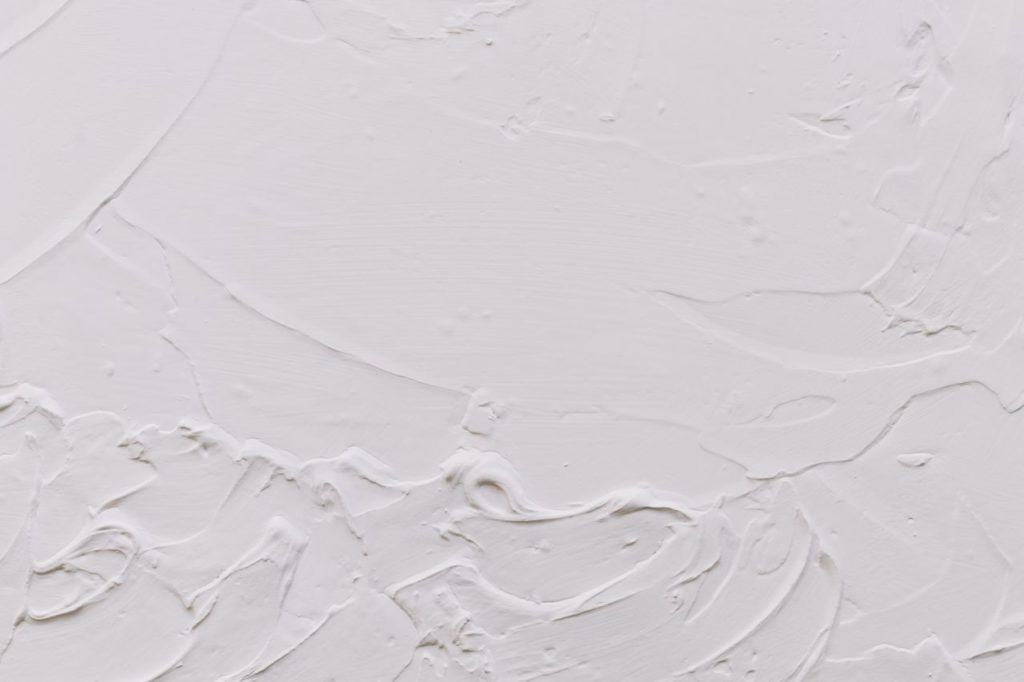
Plaster is a gypsum-, lime- or cement-based building material that is used in construction and DIY projects. It is a common material for walls, ceilings or decorative elements. When you wish to make a plaster surface smooth or even remove it entirely, you might wonder whether it is possible to sand plaster. The short answer is:
Yes, you can sand plaster. You can sand it by hand using sandpaper or with a powered sander. Doing it manually allows for intricate work or repair while a power tool is efficient for sanding down larger areas or whole walls.
Read on for more details on the process of sanding plaster and the equipment needed.
When Should You Sand Plaster?
The most common reasons for sanding plaster are
- smoothen its surface,
- removing old paint or adhesives,
- removing the whole plaster from a wall,
- repairing plaster, and
- preparing the surface for painting (source).
Whether sanding the plaster is necessary for these projects depends on the type, quality and smoothness of the plaster on the wall or ceiling.
Before you sand down the wall with sandpaper or a sander, you must ensure the surface is free from any kind of imperfections or things that might break your material, such as nails or screws.
Sanded plaster will give you a good surface for paint to stick to. If the wall is even, you can easily apply one or several coats of paint (depending on the type of paint and its level of sheen). Otherwise, the imperfections of the surface will be even more visible after the paint is applied.

How Do You Sand Plaster?
If you choose to sand walls or objects made of plaster, you need to determine which level of smoothness you wish to achieve. The final sanding should be done with light to medium grade sandpaper, i.e. 120 grit and higher. You might need to use lower grit sandpaper first and perform several rounds of sanding if the surface is very uneven. If you limit your sanding to using too coarse paper, it will leave visible sanding marks on the wall.
Before you choose the equipment for sanding plaster, you need to determine its hardness. This depends on the ingredients of the mixture used for your project. Plaster is normally not as hard as concrete, so it can indeed be sanded by hand or with regular sanders without the need for a special concrete sander. Read on to learn about the tools that you can use.
How Do You Repair Plaster?
Before you start sanding, you should inspect the plaster surface for imperfections. If the plaster has defects like holes, nails, or cracks, it needs to be repaired before you sand the area.
This can be done by filling the cracks with putty or spackling. You have then to wait for the putty to dry according to the manufacturer’s instruction.
Afterward, you need medium-120 grit sandpaper to sand it until the fixed patch is even and blends in with the original surface. You can then apply a coat of paint to finally cover up the imperfection.
Sanding Plaster with a Sander
There are different types of power tools available for sanding which are introduced in this section. When you decide which tool you chose, make sure you assess the hardness of the plaster. You can do this by using sandpaper in a small corner and test whether it is easy to achieve some abrasion.
If the material is soft and can be easily removed with regular sandpaper, you can use any of the below-mentioned tools. Otherwise, you should consider getting a stronger and more durable concrete sander as the other tools might not stand the stress.
Electric Drywall Sander
Although plaster is not drywall, you can consider using a drywall sander to get a plaster surface smooth. This is normally a disc sander mounted to a pole that is normally used for dry-sanding. Most drywall sanders have a vacuum hose attached to the dust collection part of it which reduces the dust production.
You can use its disc head on the ceiling and walls. You will find different models with different features and speed levels.
Portable Belt Sanders
You might know belt sanders from woodworking or hardwood floor refinishing. These types of sanders come with a sandpaper belt which tends to limit their use to softer plaster surfaces.
Orbital and Random Orbital Sanders
Orbital and random orbital sanders are quieter, smaller and usually cheaper than belt sanders. At the same time, they are also more versatile for other DIY uses. Orbital sanders have a rotating rectangular sole. Random orbital sanders come with a rounded sole with rotational and eccentric movements which usually leads to smoother and more even finishes.
While these tools can be a good choice for decorative objects made of gypsum-based plaster they are usually too weak to deal with lime- and cement-based plaster.
Angle Grinders
As a versatile power tool, you can also use angle grinders for both cutting and sanding plaster. To sand the material, you need sanding discs – ideally some of the more durable ones. Note that an angle grinder requires some training. It bears the risk of hurting yourself or damaging your wall if you do not use it properly.
Read this instruction to learn how to use an angle grinder.
Concrete Sanders
For hard surfaces and if you want to be on the safe side, concrete sanders are the ideal yet rather pricey tool for the job. These sanders are powerful and durable and most of them come with ergonomic features that prevent fatigue if you need to sand a whole wall.
Depending on the tool, they allow for wet or dry sanding and offer variable speed options. As they are designed for use on concrete and stone, they can also deal with any type of plaster.
Some of these tools are optimized for harsh concrete work which can also be used for removal of plaster surfaces. Others are designed to produce fine finishes.
Learn more about concrete grinders in this article.
Sanding Plaster by Hand
If you wish to sand a decorative object (such as moldings or covings) or if it is just small repair work, using sandpaper or a sanding block is probably the most economical method. Although some plaster mixtures might give you a hard time, it is basically doable to sand most kinds of plaster by hand.
Which Sandpaper Should You Use for Plaster?
For plaster, diamond sandpaper is usually the best choice as it is the most durable type. Other sandpaper types are less durable and may break easily. You should either use sandpaper with a small wood block or get a diamond sanding pad for better efficiency.
Example of a diamond hand sanding pad (find it on Amazon)
Before you start sanding, you should check the plaster for imperfections and fix them first (see the previous section for more guidance).
As for any other sanding job, you start with coarse sandpaper first and move on in different steps to even finer grits. Most people are probably happy with the result of using 120-grit sandpaper. However, if you require a smoother surface (e.g. for decorative objects) you will have to use sandpaper with higher grits.
Should You Do Wet- or Dry-Sanding?
There is an ever-lasting debate whether dry- or wet-sanding is the best approach to sand hard surfaces such as concrete or plaster. Some people argue that wet-sanding produces a smoother surface while others just highlight that it lowers the dust production and increases the lifetime of sandpaper and discs (source).
Wet sanding is normally done for a smooth finish (i.e. with higher grits) after a surface has been dry-sanded with coarse abrasives. It helps get a better finish and also it removes the scratches left by dry sanding.
The main difference between wet and dry sanding is the movement required for them: Wet sanding needs straight lines, and dry sanding requires small circles.
While sanding plaster (for dry-sanding in particular) you should wear a particle mask so that it prevents dust from getting into your lungs. Also, seal the doorways and other areas with plastic during the job.
Whether you should apply wet- or dry-sanding depends on your personal preference and the ease of doing so. There is no black or white recommendation on which one is the better approach. Both may work on flat surfaces and even on walls if you use proper equipment (e.g. a concrete sander with built-in water supply). Yet it is virtually impossible to wet-sand a ceiling, which leaves you with dry-sanding as the only remaining option for that kind of project.
Conclusion
You can basically sand any type of plaster. However, it is key to assess its hardness and find the right tool and equipment to deal with the specific surface. A very hard plaster surface may require the use of a concrete sander while softer and smaller areas and objects could even be sanded by hand.
To prevent your tools and equipment from being damaged, make sure that you test the hardness of the plaster, the suitability of your tools (refer to the manufacturer’s instructions) and use only new and flawless abrasives.
If you are slightly experienced with
sanding and follow the steps in this article, you will certainly get the job
done without much difficulty.


